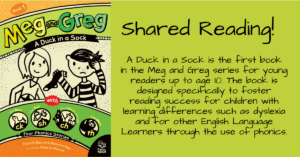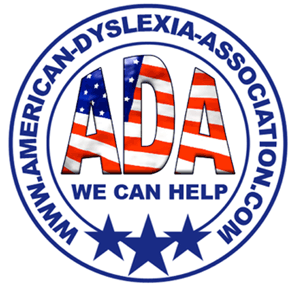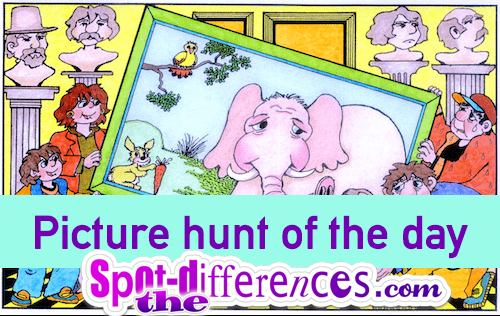New, Struggling Readers Find Success with Shared Reading
By Rowena Rae and Elspeth Rae

Library and bookstore shelves have lots of books for kids in 2nd, 3rd and 4th grades, but most of them are un-readable by a dyslexic child who’s still grasping the basics of reading. In contrast, books with an appropriate reading level often have content aimed at kindergartners or preschoolers. A new book aims to find the middle ground.
Meg and Greg: A Duck in a Sock is a book of stories about two 10-year-old kids who have a host of adventures together. The four stories in the book have several features designed especially for 2nd, 3rd and 4th-graders with dyslexia to be successful at reading and to enjoy the content.
The readability features include:
- Two reading levels for shared reading, a strategy that encourages reading practice
- Highly controlled text with a phonics approach to set learning readers up for success
- Introduction of one new sound at a time for repetitive practice
- Cumulative stories where each new story uses words with already introduced sounds while adding a new sound
- Text that mimics hand printing for easier letter recognition
- Extra spacing between lines of text to help the eye follow one line at a time
- Short chapters for easy pacing through each story
The content features include:
- Characters of a similar age to readers
- Adventures with animals
- Age-appropriate humor
- Graphic style similar to books peers might be reading
- Simple illustration labels for younger or severely challenged readers to be able to take an active part in reading the stories
The shared reading approach, in particular, is an aspect that sets the Meg and Greg stories apart. Shared reading has many benefits, both for the learning reader and for the more experienced reader.
The learning reader gets to read highly controlled text that’s within their reading grasp without the pressure of having to read everything on the page. At each page turn, the learner gets a break while the buddy takes over the reading. While the buddy reads, the learner might be looking at the illustrations or following along with the words. Either way, the learner hears the cadence and expression the more experienced reader uses. This kind of modeling helps the learner develop their skills at fluent reading.
The text read by the buddy—always on the left side of the open book—is at a higher reading level, which allows the story to be more complex than would be possible with the restricted sounds used on the right side, in the text for the learner.
Benefits for the buddy reader—often a parent or other family member—are sharing the joy of reading, sitting close to read the same book, and getting an idea of where the child’s reading skills lie. When the buddy is an older sibling or classmate, there’s also an element of mentoring and shared learning in a shared reading situation.
Best of all, by sharing the reading and focusing on reading only the highly controlled text, the learner gets the satisfaction of having read a story themselves. Such an achievement brings joy and helps build critical self-esteem.
Rowena Rae and Elspeth Rae are the concept creators and writers behind the Meg and Greg series of books. Rowena is a children’s writer and editor, and Elspeth is an Orton Gillingham-certified teacher of children with dyslexia. They both live in British Columbia. Book 1: A Duck in a Sock is currently available, and Book 2 will appear later this year. For more information, please visit www.tworeadbooks.com.






